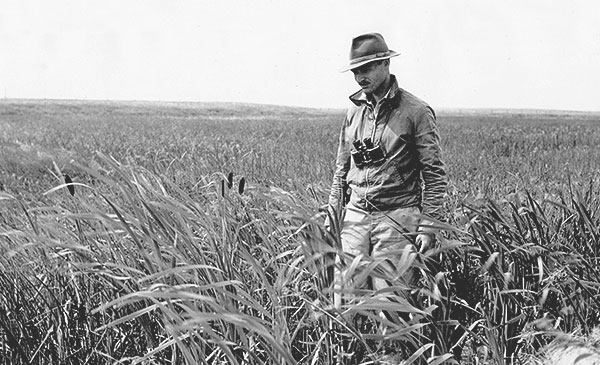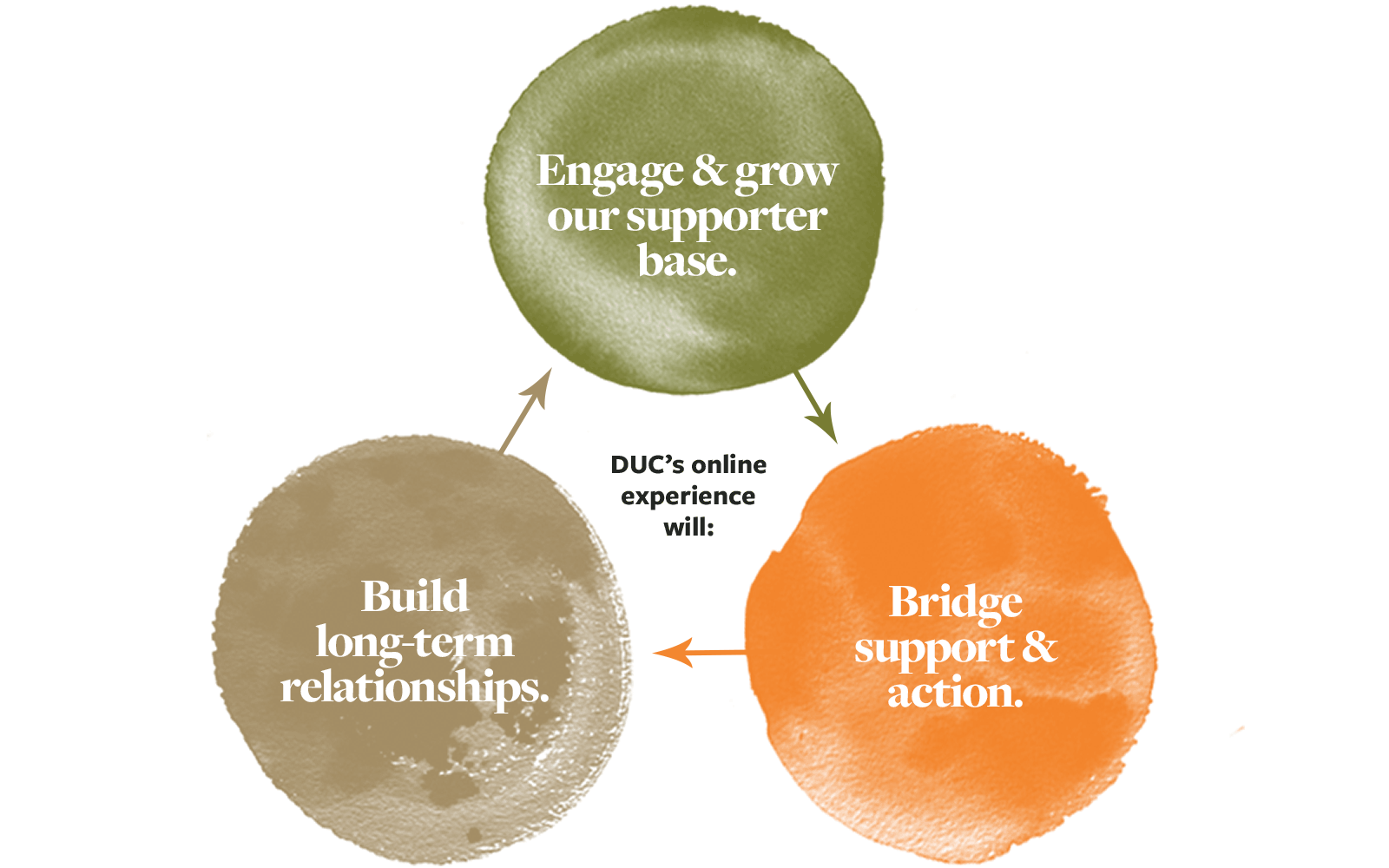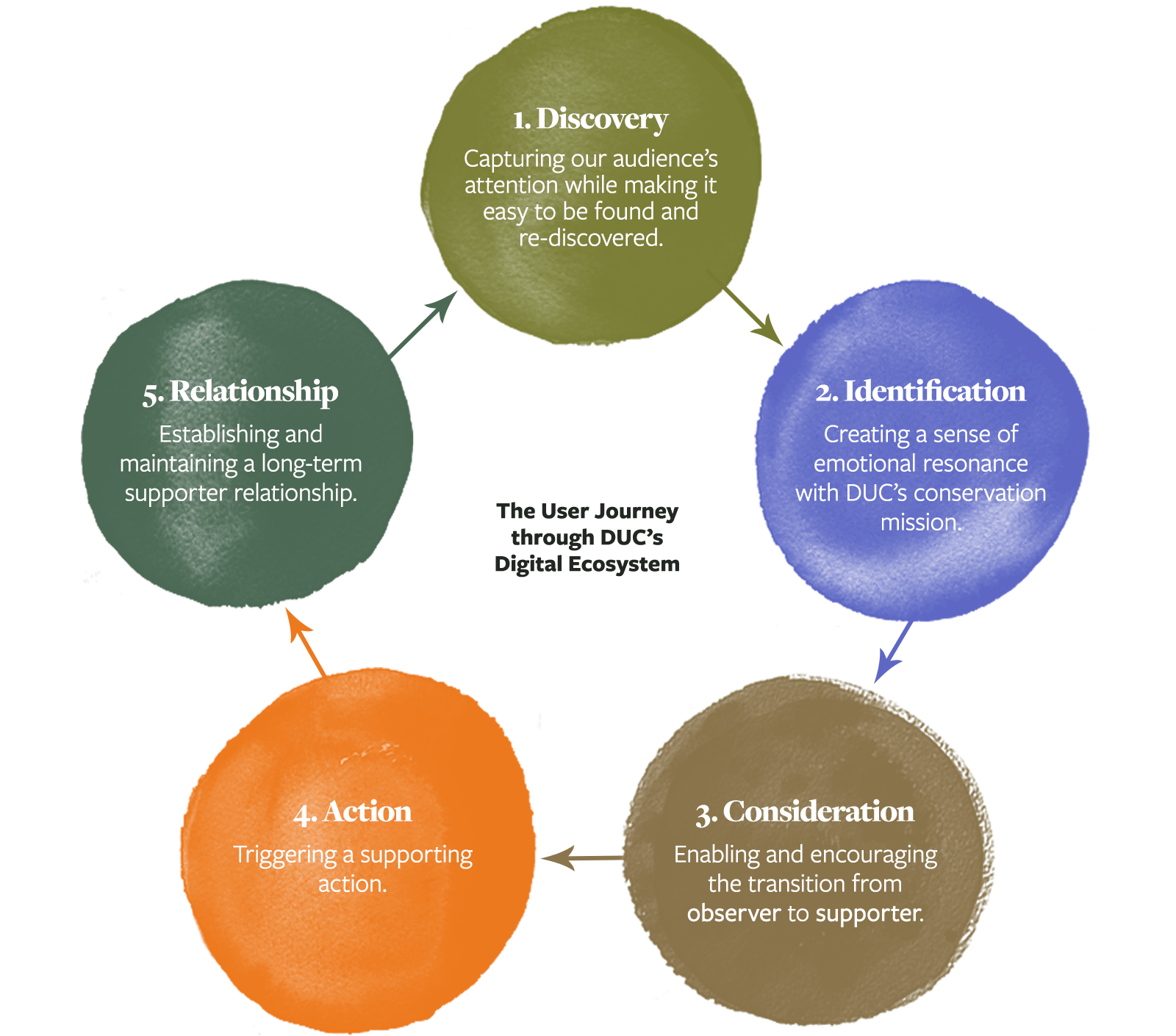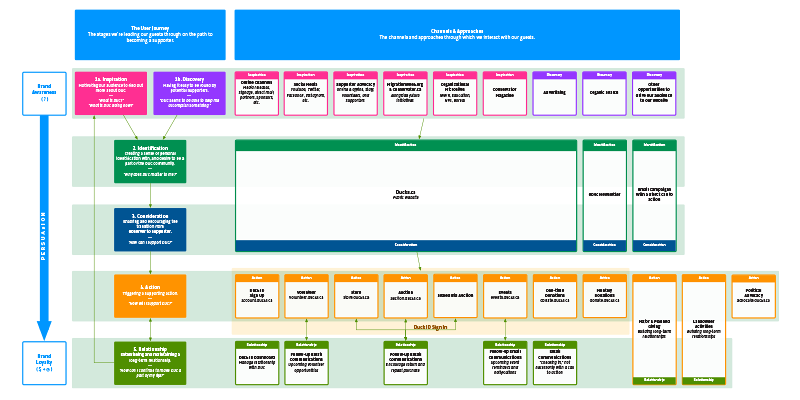Building a compelling vision for Ducks Unlimited Canada’s digital ecosystem
Organization
Ducks Unlimited Canada
Role
Project Lead, UX Researcher, Strategist
Date
2016 – 2018
Ducks Unlimited Canada (DUC), a nonprofit environmental conservation organization, conserves wetlands and other natural spaces for waterfowl, wildlife, and people. For more than eighty years, the organization has been protecting and managing habitats across Canada that affect the lives of millions of Canadians every day.
DUC was an early adopter of the web as a platform for communications and fundraising, launching its first website as early as 1996 (view on Wayback Machine). However, by late 2015, its online experience was becoming fractured and disconnected. DUC needed a new vision to unite and direct its digital platforms.
In response, I initiated and lead a project to define and implement a new supporter engagement strategy to create a compelling vision for DUC’s digital ecosystem and build a better user experience.



Challenges
At the start of the project, we recognized that we needed to have a clear understanding of the project goals and motivations, which we could then use to guide the project process. Together with the project team, I identified our key challenges, which we captured as “How Might We” statements:
- How might we establish a human-centred mindset among internal stakeholders, while creating a sense of ownership in the project outcomes?
- How might we build a deep understanding and empathy for DUC’s user and business needs?
- How might we define and implement a strategic foundation that will unify and direct DUC’s digital ecosystem?
Research & discovery
We planned a research & discovery phase based on a range of quantitative and qualitative research methodologies.
Some research methodologies we used
- Stakeholder interviews
- Stakeholder workshops
- User interviews
- User surveys
- Analysis of supporter outreach and communications
- Review of existing analytics artifacts and data
- Content audits
- Channel audits
Discovery wall
Internal stakeholder engagement was crucial not only to understand overarching business goals and deeply-felt challenges around the existing online experience, but to instill a sense of ownership in the project outcomes. For our supporter engagement strategy to succeed, we needed key stakeholders in the organization to buy in and champion the mindsets and methods we established as the project unfolded.
We started a physical “Discovery Wall,” publicly visible to anyone who was interested, where we captured and shared our insights, ideas, and explorations. Our goal was to create a collaborative, transparent atmosphere around the project process.
A clear mandate
It quickly became clear we had a mandate from both stakeholders and users to create a better, more unified user experience.
From our stakeholders, we heard thoughts like:
“Our corporate silos are manifest on our digital platforms.”
“We can’t force our language on people we’re trying to bring in.”
From our users, we heard challenges like:
Getting lost in “rabbit trails.”
Moments of “I’ve had enough.”
We also uncovered clear statements of intent. Our users wanted to:
- Understand what Ducks Unlimited Canada does, and why its work matters.
- Understand what Ducks Unlimited Canada is doing in their area.
- Help make a difference in the issues that concern them most.
Our research activities lead us to a key insight that would ultimately drive our supporter engagement strategy: DUC’s digital ecosystem needed to help bridge support and action.
Defining & implementing our strategy
The purpose and value of DUC’s digital ecosystem
Based on key insights from research and discovery, we established a high-level, guiding vision for Ducks Unlimited Canada’s supporter engagement strategy for its digital ecosystem. This would help us articulate the “big picture” across business lines, and serve as a starting point for more in-depth strategical outcomes.

Building empathy
With this in hand, we needed to clearly define and build empathy for our users, and also understand how to meet changing user needs over time.
User personas
Based on our research and informed by existing market analysis, we created a series of user personas that captured the full range of DUC’s online audience.

User segments
User personas alone weren’t enough: we recognized that there was a distinct user journey taking place across DUC’s online ecosystem as brand-new users discovered DUC and eventually became life-long supporters of DUC’s conservation mission.
I identified and defined four stepped user segments:
Visitor → Prospect → Supporter → Loyal Supporter
Visualizing the user journey
With a deeper understanding of our users, we wanted to capture the user journey from beginning to end in a way that would be easy to share within the organization, and also visualize how DUC’s various channels and platforms fit into the bigger picture.
Stages of the user journey
I captured the user journey as a cyclical, distinct set of stages that a visitor moves through on the path to becoming a loyal supporter.

Channel map
To place the more than twenty digital channels into the context of this user journey, we created a channel map that identified the role and purpose of each platform.

Together, these artifacts provided an intuitive “big picture” for the broader organization while clarifying which user needs must be met at any given moment.
Implementation
A good strategy provides a foundation for action. After achieving buy-in from project stakeholders and the broader organization, we prioritized DUC’s digital platforms for renewal.
First, we needed to create a new user interface design system that would unify our online platforms by providing a common design language. Then, we needed to launch a renewed new public website based on user needs and business goals that would act as a launching point for a comprehensive online renewal.